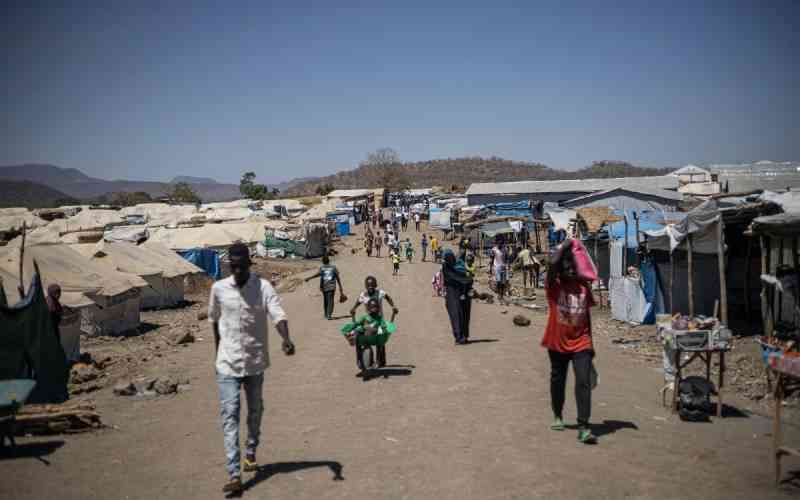By Dr Tom Nyangau & Onwong’a Yabesh
Kisii town has in recent past remained an evergreen and eco friendly town in Kenya for a long time in spite of the fewer environmental challenges of rudimentary solid and liquid waste disposal and air pollution management hiccups . However until recently unprecedented infrastructural development of sky rise buildings in most parts of the town which saw both exotic and indigenous trees species as old as 70-100 years cleared to pave way for the new buildings compromising the purification of air and putting the lives of 65000 night and 80,000 day residents of Kisii town in jeopardy.
A long the Kisii-Kisumu highway, from the Nakumatt stretch to Daraja-Mbili, in a span of less than five years, the vegetation cover of Spathodea nilotica, Eucalyptus spp, and Cyprus are almost nil browning the town due to new and upcoming commercial sky rise buildings. The menacing bats a long Barclays bank and mashauri petrol station has witnessed clearance of cypress species destroying their habitats and denying Kisii town residents oxygen, rainfall and aesthetics.
Potential exponential trend of biodiversity and habitat destruction through devegatation of the town, poses a critical question- where will the oxygen for the 80,000 town residents and rainfall emanate from if the trend continues unabated? owing to the fact that trees serve as the “lungs” of the earth that generate oxygen, usually inspired by animals and take in carbon dioxide expired by animals. Trees which serve as rain catchment entities and carbon sinks through evapo-transpiration and photosynthesis respectively. Wanton destruction of vegetation in the heart of the town can be simulated to “amputation” of the town’s lungs leading to decreased of oxygen volumes in the atmosphere significantly for the residents of Kisii town, posing a great danger to asthma, bronchitis, tuberculosis patients and fatigue to the general population inter alia.
Recurrent trends have resulted, automobile (vehicular traffic , motorcycles) numbers increased tremendously in the town as evidenced by long snarl of traffic in the morning and evenings as traffic jam along the busy roads of the town leave alone increased carbon emissions in form of carbon monoxide and carbon dioxide which in effect increase the carbon foot print of Kisii town because the carbon sinks (vegetation) have been destroyed impacting negatively on climate change.
Calling NEMA and Kisii town’s management and the general public exercise moral and legislative duty to safeguard and protect the environment through sustainable development initiatives that strike a balance between socio-economic development with environmental protection. Every possible efforts should be put in place to ensure sustainable development plans/ initiatives are approved with a rider of planting flowers, vegetation, potted plants, grass lawns, after infrastructural developments are complete. Flower gardens consisting of broad leaved plant species be encouraged. The county government should intensify beautification initiatives that are inclined to improvement of vegetation cover and reject EIA reports that are environmentally retrogressive cum insensitive.Growing enviromental concern in Gusiiland is equally a national and global headache.
Prof Wangari Maathai.is on record when she said in a few decades, the relationship between the environment, resources and conflict may seem almost as obvious as the connection we see today between human rights, democracy and peace.
 The Standard Group Plc is a
multi-media organization with investments in media platforms spanning newspaper
print operations, television, radio broadcasting, digital and online services. The
Standard Group is recognized as a leading multi-media house in Kenya with a key
influence in matters of national and international interest.
The Standard Group Plc is a
multi-media organization with investments in media platforms spanning newspaper
print operations, television, radio broadcasting, digital and online services. The
Standard Group is recognized as a leading multi-media house in Kenya with a key
influence in matters of national and international interest.
 The Standard Group Plc is a
multi-media organization with investments in media platforms spanning newspaper
print operations, television, radio broadcasting, digital and online services. The
Standard Group is recognized as a leading multi-media house in Kenya with a key
influence in matters of national and international interest.
The Standard Group Plc is a
multi-media organization with investments in media platforms spanning newspaper
print operations, television, radio broadcasting, digital and online services. The
Standard Group is recognized as a leading multi-media house in Kenya with a key
influence in matters of national and international interest.







